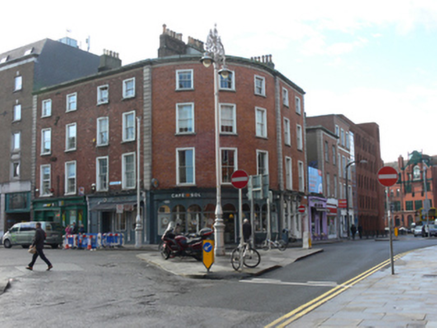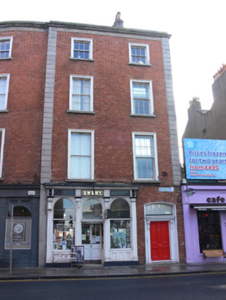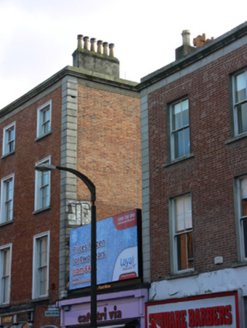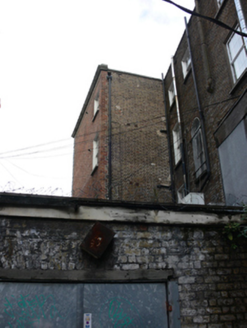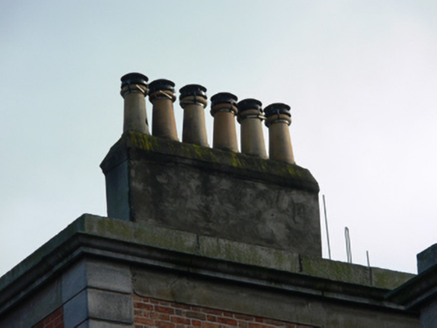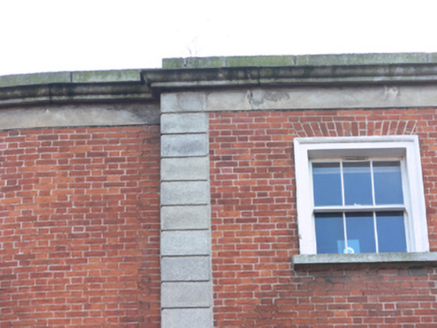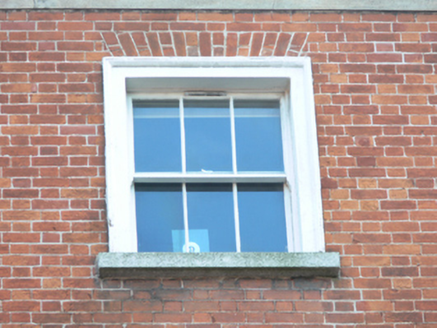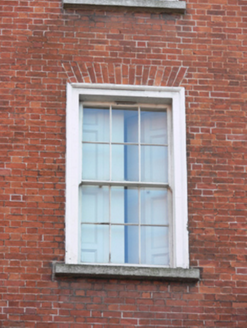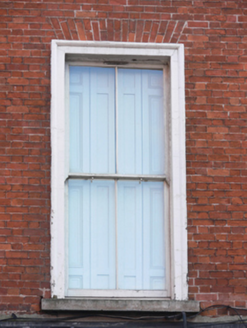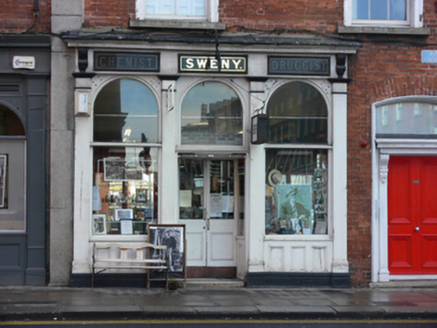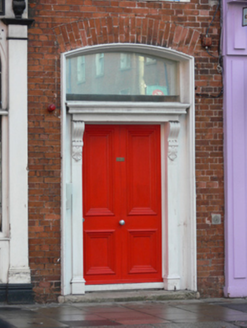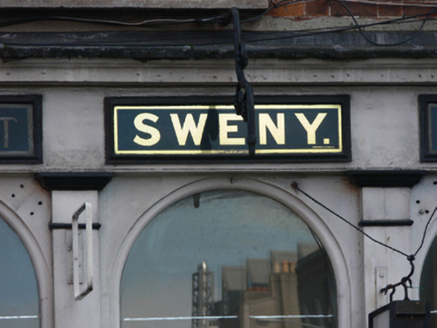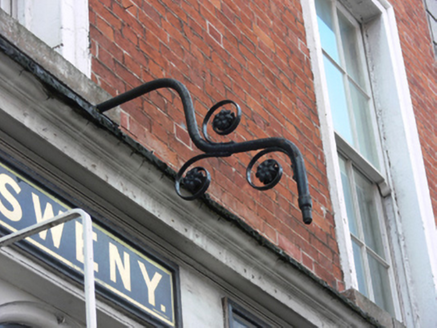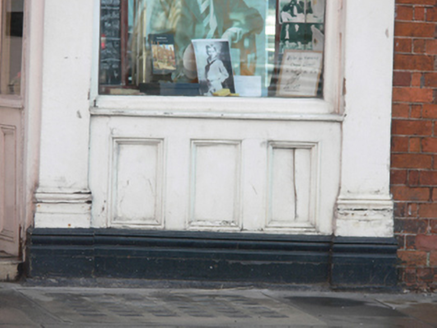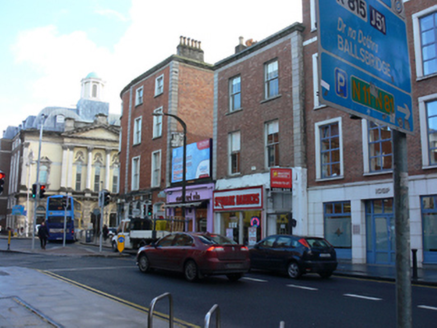Survey Data
Reg No
50020449
Rating
Regional
Categories of Special Interest
Architectural, Artistic, Cultural, Historical, Social
Original Use
House
Historical Use
Shop/retail outlet
In Use As
Shop/retail outlet
Date
1830 - 1870
Coordinates
316571, 233804
Date Recorded
24/02/2015
Date Updated
--/--/--
Description
Terraced two-bay four-storey over basement former house, built c.1850, having shopfront to front (north) elevation, and return to rear (south) elevation. L-plan pitched slate roof, hipped to return, concealed behind granite ashlar parapet. Rendered chimneystacks having clay pots. Carved granite cornice and render eaves course over red brick, laid in Flemish bond, to walls, with ashlar granite quoins. Square-headed window openings with moulded masonry architraves, granite sills and three-over-three pane and six-over-six pane timber sliding sash windows, some retaining panelled shutters to interior. Shopfront comprising timber pilasters, urn shaped console brackets supporting carved cornice over painted glass nameplate and remains of wrought-iron hanging sign. Round-headed window openings with fixed pane display windows over timber panelled risers, flanking square-headed door opening with segmental-headed overlight, having double-leaf half-glazed timber panelled door. White marble step, painted masonry plinth course to shopfront. Segmental-headed door opening with moulded masonry surround, overlight, and entablature comprising pilasters and fluted console brackets supporting cornice over timber panelled door. Granite step. Street fronted on Lincoln Place facing north to junction with Westland Row.
Appraisal
Although no longer in use as a chemist, the Sweny family occupied this house and shop from the mid nineteenth century. Mark Sweny, M.D., general medical practitioner and accoucheur, operated from the premises in 1862. The business is mentioned in Joyce's Ulysses, when Leopold Bloom comes here for his lemon soap. Lincoln Place was the site of Turkish baths and medical facilities, such as the ophthalmic hospital, in the nineteenth century, and this chemist and apothecary would have provided essential supplies for those who used the these services. The handsome shopfront with its eyecatching gold lettering adds to the historic character of the building, which is further enhanced by the retention of features such as the timber sash windows and internal shutters. The façade is beautifully framed by granite quoins and cornice, which together with the red brick, are details and materials which connect the premises with the other buildings making the corner with Merrion Street.
